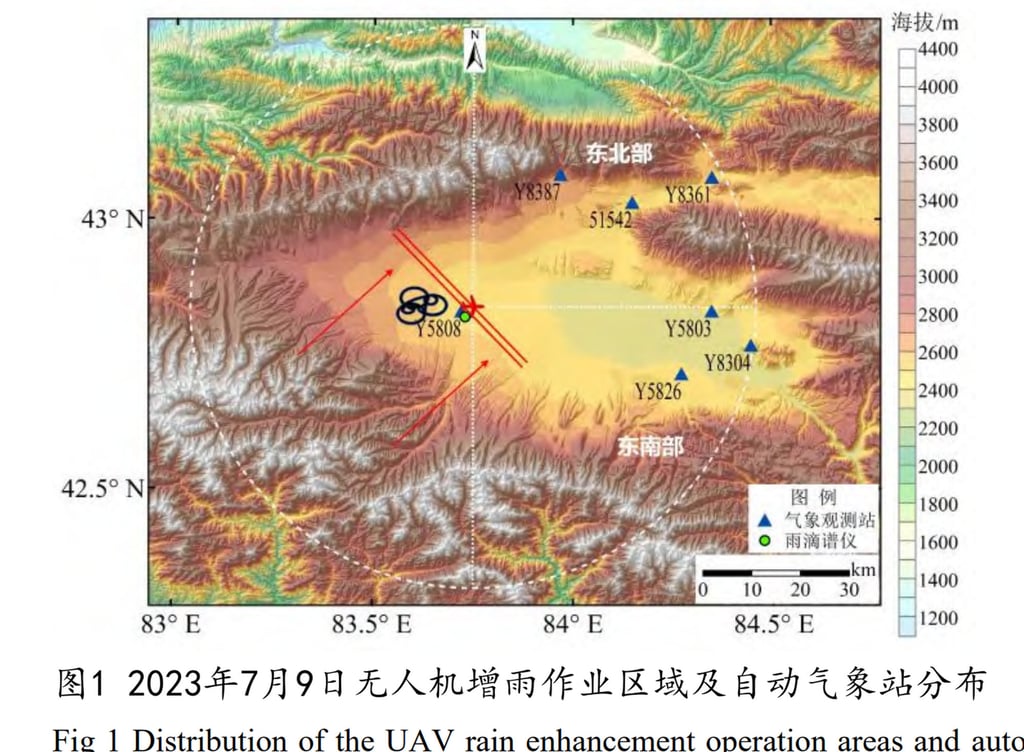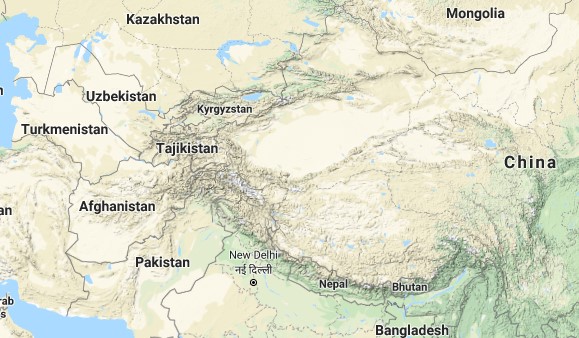China’s weather modification test: cup of cloud seed makes 30 swimming pools of rain
Fleet of Chinese drones scatter silver iodide powder over dry Xinjiang region and increase rainfall by more than 4 per cent, results show
This amount of silver iodide powder, six times the density of water, can barely fill a travel mug.
The test, led by the CMA’s key laboratory of cloud-precipitation physics and weather modification in Beijing, was detailed in a peer-reviewed paper published in Chinese-language journal Desert and Oasis Meteorology on April 10.
The yellowish powder was wrapped in a flame bar, and released to the atmosphere in smoke.
Each flight used two flame bars, each bar containing 125 grams (0.2 Ibs) of silver iodide, according to the researchers.
The silver iodide particles were dispersed at a rate of 0.28 grams per second.
Since 2021, the project team networked 24 automated ground stations with satellites and drone fleets.
“With lower safety risks, superior manoeuvrability, precise controllability, and extensive coverage, drone systems enable all-weather, year-round, three-dimensional, and large-scale rain/snow enhancement operations,” Lin and his colleagues wrote in the paper.
Similar weather modification practices have been carried out in other countries and many regions in China such as Guizhou, Shanghai, Gansu and Sichuan.
“But how to conclusively determine whether a cloud-seeding operation amplified or inadvertently suppressed precipitation?” the team wrote.
“What precise metrics define the water volume gained or lost? And how much does it benefit when scaling to a whole year? These pressing questions are being asked by the government and the public.”
Working with Xinjiang’s Weather Modification Office, the team employed three validation methods to cross-exam the results.
Raindrop spectrometers showed droplet diameters expanding from 0.46mm to 3.22mm (0.2 inches to 0.12 inches) post-seeding, while satellite imagery recorded cloud-top cooling of up to 10 degrees Celsius (50 Fahrenheit) and vertical growth of around 3km (1.8 miles), proving the positive effect with physical evidence.
Statistical analysis, based on 50 years of regional climate data, estimated 78,200 cubic metres of added rainfall with 3.8 per cent relative enhancement.
Supercomputer simulations predicted a 73,800 cubic metres increase (4.3 per cent boost), aligning closely with ground observations.
The effect of weather modification depended on many factors, which can vary significantly in different time and places, according to the researchers.
“When resources permit, we may conduct more iterative numerical simulations of multi-variable cloud-seeding campaigns – systematically varying parameters including timing, altitude and dosage to quantify each factor’s percentage contribution to precipitation yield,” they added.
Xinjiang, which includes parts of the Gobi and Taklamakan deserts, faces severe threats from glacial retreat and desertification. The Tianshan Mountains’ ice cap
s – critical for 25 million residents – are shrinking at a rate of 2 to 3 sq km (0.8 to 1.15 sq miles) annually, according to official estimates.
But the region is also getting more rainfall at a rate of 6.44mm (0.25 inches) per decade due to the warming climate, according to some climate studies.
China’s geoengineering activities, including artificial forests and solar panels, are believed to help accelerate the natural greening process.





No comments:
Post a Comment